LG G2 and MSM8974 Snapdragon 800 - Mini Review
by Brian Klug on September 7, 2013 1:11 AM EST- Posted in
- Smartphones
- LG
- Mobile
- LG G2
- Android 4.2
- MSM8974
- Snapdragon 800
Display
We've been very pleased with what comes out of LG Display as of late, and the G2 doesn't disappoint. It's a 5.2-inch diagonal LCD with 1920x1080 resolution for 423 PPI density. Of course, it isn't just resolution that matters, but of course calibration, viewing angles, and other quality measures. What's interesting about the G2 is that it has two discrete touchscreen matrices which get routed to the top and bottom and out two different connectors. LG says this allows it to get the bezels on the G2 down to 2.65mm. I find a lot of what constrains device size lately is really width rather than height, and maximizing the amount of the front area used by display helps devices include bigger displays without getting too large.
![]()

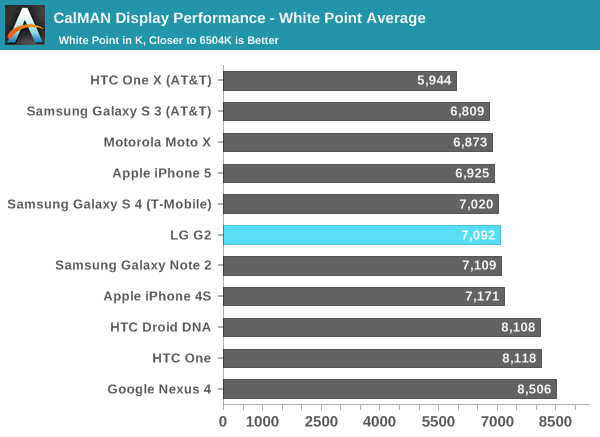
Saturations:
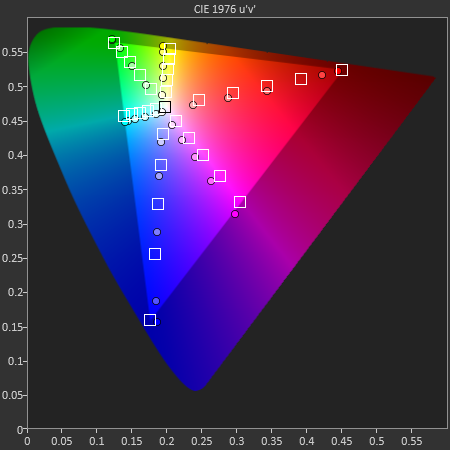

Grayscale Sweep:

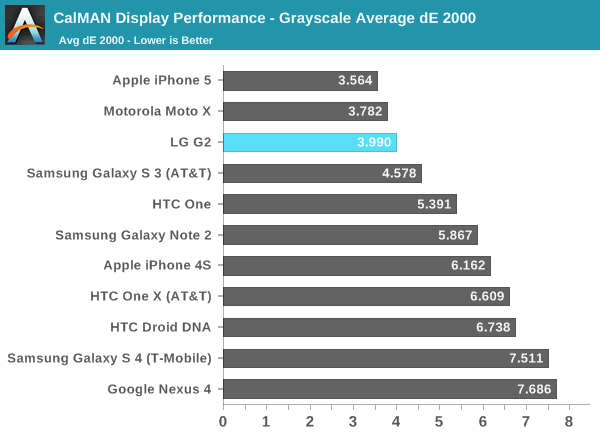
GMB Color Checker:
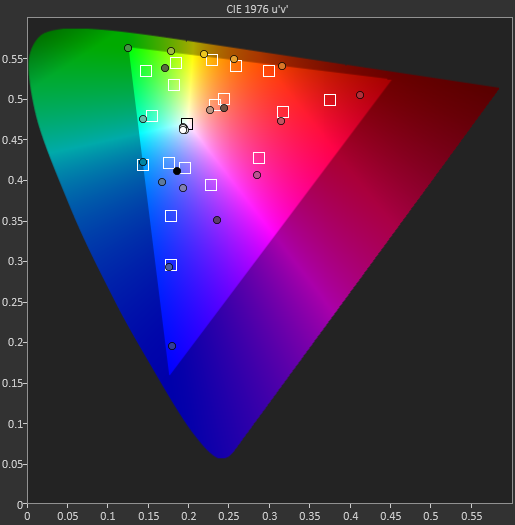
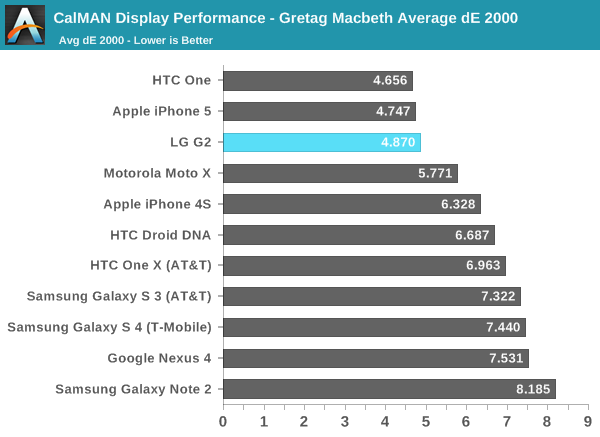
I measured the G2 display and was very impressed with how things turned out. The panel goes nice and bright (around 400 nits) but not quite as high as the 460 from the 720p LG Display panel from the Nexus 4. On the bright side however it comes in close to 6504K in temperature, and has some of the lowest DeltaE 2000 scores we've seen, with the iPhone 5, HTC One, and G2 clustering together in the GMB color checker test and saturations sweep.
















120 Comments
View All Comments
Paulman - Saturday, September 7, 2013 - link
"<b>WOW...</b> wow.... wow, wow..." - That's literally what came out of my mouth when I first saw those battery life graphs. Amazing, LG. GG WPPaulman - Saturday, September 7, 2013 - link
"Gone are the days of 1.4V to hit near-2GHz frequencies it seems, instead 8974 will hit 2.3 GHz at around 1V." - That elicited another 'Wow' from me.andykins - Saturday, September 7, 2013 - link
That is an insane difference. But is there some downside too? Seems a bit good to be true.Froyorkshire - Saturday, September 7, 2013 - link
Heat, most likely. The LG G2 seems to have it taken care of but if the Nexus 4 was any indication, the Nexus 5 needs to have a better-engineered body to handle the S800's potential heat.tuxRoller - Saturday, September 7, 2013 - link
Why would you have more heat when pushing less V and A? Yes, it is clocked higher and has a more powerful gpu so its tdp (or whatever) will be higher than s600 soc, but at the same clocks as the pre-800s it should use less power.This shouldn't be a surprise since this is, apparently, the first time snapdragons have used 28nm hpm, and with new processes come inherent advantages (also problems, but heat shouldn't be one of them unless you are running it at full-tilt).
theduckofdeath - Sunday, September 8, 2013 - link
They reduce the voltage to reduce the wattage, which is what heat is generated from.gwydionjhr - Saturday, September 7, 2013 - link
The side by side comparison video is very interesting. I've only have a light understanding of what I'm seeing, and if you get a chance, I'd really love to get your impressions on how each of these OIS/EIS systems perform. The one question that came to me as my eyes darted back and forth tying to compare the two videos, was that the 1020 OIS seemed to work pretty well, right up to the moment of impact on your footfall. I'm I seeing that right? Is this a result of the weight of the larger sensor in the 1020 maxing out the capabilities of the OIS when those large acceleration forces hit it?Brian Klug - Saturday, September 7, 2013 - link
Accommodation angle is the big game, and they're all also tuned differently too it seems. I'm not walking very aggressively or stomping around either, but trying to walk normally. I wanted to include the Lumia 920 as well but didn't bring it, the 925 seems to be pretty similar to what I remember the 920 being like though.-Brian
UpSpin - Saturday, September 7, 2013 - link
It's funny that in my opinion the 1020 (and so also the 808) does one of the worst jobs in OIS, the 925 the best followed by the HTC One and Moto X. Between them is the rest. LG2 on par with the 1020, in some scenes worse, in some better.In the 1020 vs. 925 comparison, at the beginning, Brian walks along a footway, the 1020 video has a very obvious and penetrant periodic shaking/reflex which does not exist in the 925 or HTC One video.
At the very beginning of the Moto X comparison we see a handrail with a building behinde it, the Moto X video is sharp and steady, the 1020 video wobbles in the z-direction
The colors in the 1020 are the most vivid ones, but in my opinion also the most over saturated and artifical ones. It does a good job in capturing the blue of the sky, but therefore darker details aren't visible on the 1020 videos. (handrail at the end of the test videos)
It's obvious that using a larger sensor a OIS is harder to implement, but I find it odd that Nokia hasn't made any use of the 41MP in video recording mode by additionally implementing an EIS.
But I found it surprising how good or even better the competition is (or how bad the 1020 in videos is), using a cheaper and less intrusive sensor. (in photos the 1020 will probably (and hopefully) remain unbeaten)
Krysto - Sunday, September 8, 2013 - link
It seemed to me the LG one beat the 1020 OIS slightly. The 920 one was the best though, as Brian said. But 920 had far from accurate colors.